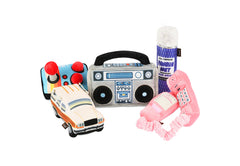Pets in general need extra love, care and attention and owning one is a huge responsibility.
Routine vet visits are a must if you want to keep your cat happy and healthy and we’ve listed down why visiting the veterinarian should be in your must-do when you plan things around your pet. Cat kennels offer in-house veterinary services that are undeniably worth investing in, especially when it comes to your cat’s health.
Kittens: from birth to 12 months old
Kittens need to visit the vet every 3-4 weeks during the first 16 weeks of their life. Aside from doing a physical exam and health check, your little kitties will be getting a series of vaccinations that will protect them and you too from serious illnesses and diseases. Your veterinarian will be scheduling the best time to give these shots; it’s important to trust a professional rather than rely on the internet or what other people advise you to do.
Did you know that stool samples are a key factor in helping your veterinarian determine whether your kitten is in good health? Yes! Stool samples are needed by the vet clinic to examine and check whether the kitten has parasites in their gastrointestinal system. Don’t worry too much if it’s been discovered that there is -- parasites are quite common in young cats and deworming twice in a period of two - three weeks will eliminate them.
Feline Leukemia and Feline Immunodeficiency Virus blood testing is highly recommended between the age of 8 to 12 weeks as this is transmitted through saliva or blood. These are two life-threatening viruses that can easily be detected. Kittens may acquire the virus before, during or right after birth.
Internal examinations are paramount, but your veterinarian will also check your kitten’s physical development -- from its head to its tail! The vet will examine the skin and fur; listen to its heart beat and lungs; check the eyes, teeth, and mouth; measure head size, palpate the abdomen, and generally look for any signs of poor development and ill health.
Kitty socialization is also a key developmental milestone that only you can establish and consistently provide. It’s important to expose your kitten to other kitties as well as make them get used to having people around. The earlier you can start this, the better! Trimming their nails regularly will also prevent unsightly marks from showing on your furniture!
You’re with your cat more than your vet and you can most likely observe any issues that may occur. Behavioral problems can also be brought up with every vet visit and if you have a video or photo to back up your claims, all the better. This will help the vet decide the best course of action for you and your kitty.
If you have been giving your kittens supplements or medicines, make sure to show these to your vet too. They need to know if it is necessary and safe for your kitten. Don’t also hesitate to discuss with your vet the best diet for your kitten. Show the brands you’ve been using, or if you have been making your own special homemade meal for the kitties. At this point in time, you want to give your kittens a balanced diet that is high in protein and has the right amount of calories and fat too. While a fat cat may look cute, it is not healthy in any way.
These initial vet visits can be overwhelming in every sense -- financially, emotionally, and physically -- but keep in mind that this is all for your pet cat’s general well-being and overall good health. Another reason why you should consistently visit the vet is so that a close relationship can be established between your pet and the veterinarian.
Adult Cats: 1 year to 10 years old
Once your cat has reached a year old, you would normally only need to come to the vet once a year for a comprehensive physical examination. The tests administered during this visit usually consist of routine procedures.
Your cat would be checked physically by the vet to find any physical defects or conditions, such as lumps, skin conditions, and difficulty with movement. It would also help if you give your vet a small snapshot of how active your cat is, such as how he or she spends most of the day at home or outside, and if you notice anything out of the ordinary with how your cat moves around.
Any small injuries, out of balance movements, or persistent scratching on a certain area of the cat’s skin should be noted and conveyed to your vet. These small issues could be signs of bigger or underlying problems and should not be ignored at any cost.
Another procedure done during the annual vet visit is the stool examination. Because of this, it is advised to bring a stool sample from your cat with you before you go to the vet, since it’s usually difficult and time consuming to wait for your cat to take a poop while at the vet’s office.
Your vet would then use this sample and run it under a microscope, as well as on a lab testing machine to determine any signs of many possible diseases, ranging from parasites to stomach bacteria. If any abnormalities are found, your vet may then ask for an additional urine and/or blood sample to check further for any anomalies.
A cat’s oral health is also looked at during the annual checkup, with the vet looking for signs of plaque, tartar, or gingivitis in your pet. This is often more pronounced with cat’s aged 6 years or older, as a majority of them often show signs of periodontal disease. If your cat is found to have any oral issues, a recommendation for professional dental cleaning under anesthesia could be made by your vet depending on the gravity of the conditions presented.
Once your cat passes the routine health check, it’s time then to update his or her vaccinations. Usually, your vet would check your cat’s records which they should have in their office, or your records in your vaccination booklet. The vet would then try to determine which vaccines are further recommended based on your pet’s lifestyle and home environment.
Throughout all these, it’s important to bring a list of questions you have for your vet. Also inform your vet of any medications, nutritional supplements, or any medicines your cat may have taken over the course of the year. Such information would definitely help your vet in keeping or managing your cat’s health and fitness plan. Many dietary decisions are based on this type of information cat owners give their vets.
Also, even if your cat is perfectly healthy, another optional treatment which some owners could have is to have a complete blood work examination done on their cats while they’re at the vet. The results from this lab examination would determine if your cat is at risk for any future diseases or conditions, and would be a big help for your vet in giving advice for your cat’s diet and exercise regime.
Before leaving the vet, common medications given as preventive treatment include heartworm, flea, and tick prevention all year round, especially for cats who frequent the outdoors. This is to ensure your cat gets to enjoy the best adult time of its life as much as possible.
Senior Cats: 10 year old and above
Your pet would be considered a senior cat once it reaches 10 years of age. When this time comes, twice a year comprehensive physical examinations are recommended. This is because there is a higher probability for your cat to have various medical problems at this age.
You should note that cats are often very secretive about experiencing any pain and discomfort. So don’t be misled by their apparent aloofness and perceived well being. It is vital to always schedule a visit to the vet at least twice a year or whenever you notice anything astray with your cat.
For senior cats, a complete blood count, blood work chemistry, thyroid examination, and urinalysis are done during these visits. These series of exams would give your vet a complete picture of your cat’s health levels. After all, early detection is the secret key to your cat’s longevity and having a good quality of life.
Most of what is listed for the annual vet visits for adult cats hold true as well for seniors. Updated vaccinations, dental cleaning and evaluation, and a thorough physical examination are all part of senior vet visits.
Always observe carefully your cat’s habits, actions, movement, and immediate environment. Take close note of how they walk, rise from naps, jump around the house, and run around the yard. Let your vet know of these observations in order to find out if there is anything out of the ordinary such as showing signs of stiffness, reluctance to jump to reach higher places, or general lethargy.
In your cat’s twilight years, prevention of any disease and ensuring that your cat lives out the rest of his or her life the best way possible are the most important things you can give. This is the most you can give to your beloved pet, to ensure they are cared for with the best medical facilities possible.
About the Author
Katie Elleray is an expert from Sugarland Vet Clinic. She is a proud pet mom of a fluffy cat named Percy and an ebony shiz tzu named Hershey. She’s also a freelance writer of pet-lovers' and travel blogs and in her free time, she does travel around with her pets.





